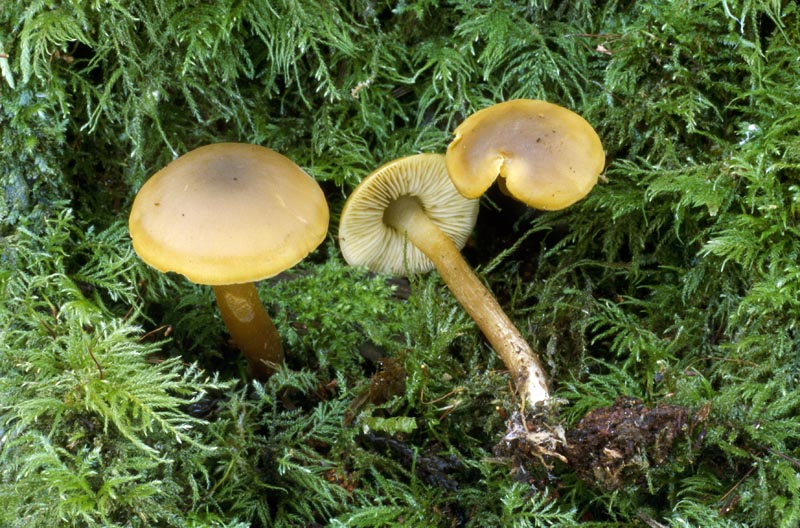Habitat: Conifers
Substrate: rotten wood
Conservation Status: Not of concern
Cap: 1.5-6.5 cm broad, convex or slightly umbonate becoming plane or shallowly depressed; surface not viscid, often minutely scurfy at first but becoming smooth; dark olive to olive-brown or olive-yellow, often becoming yellower(yellow-brown to honey-colored) in age and developing dark reddish-brown tones when dried. Flesh thin, pallid or yellow or tinged cap color; odor mild to pungent or slightly fruity; taste mild or slightly bitter. Gills: yellow to golden-yellow, tending to redden when dried; close, notched or adnexed or at times adnate. Stalk: 2.5-7 cm long, 0.3-1 cm thick, equal or slightly thicker at either end, often flattened, smooth to fibrillose or scurfy (especially over thee lower portion), sometimes streaked in age; colored like cap or slightly darker, tending to turn deep reddish-brown from the base upward as it dries.
Sources: Trudell, Steve and Joe Ammirati. Mushrooms of the Pacific Northwest. Portland, Timber Press, Inc. 2009. Arora, David. Mushrooms Demystified. Berkeley, Ten Speed Press, 1986.
PNW Herbaria: Specimen records of Callistosporium luteo-olivaceum in the Consortium of Pacific Northwest Herbaria database.
CalPhotos: Callistosporium luteo-olivaceum photos.



